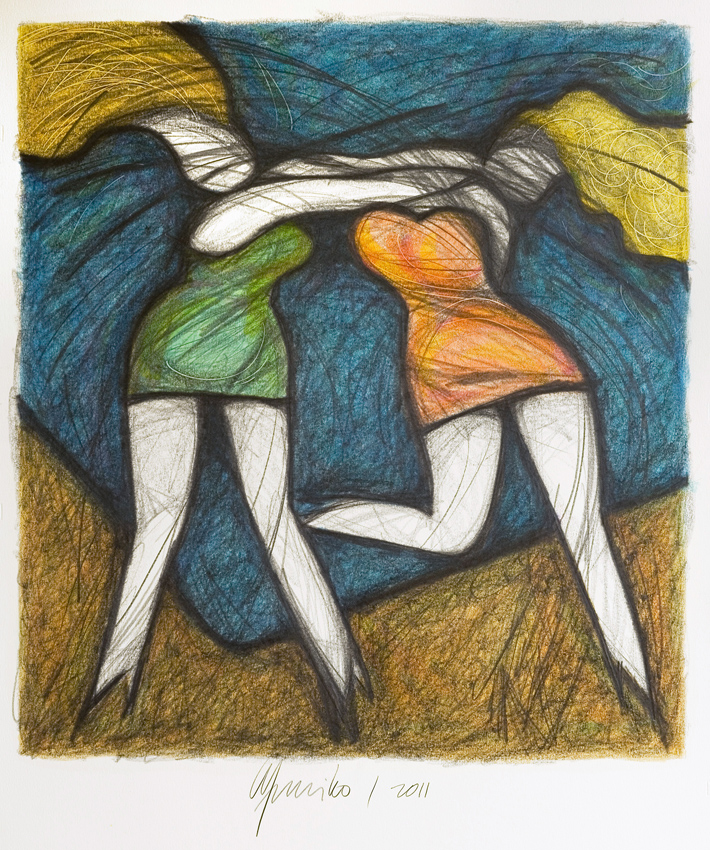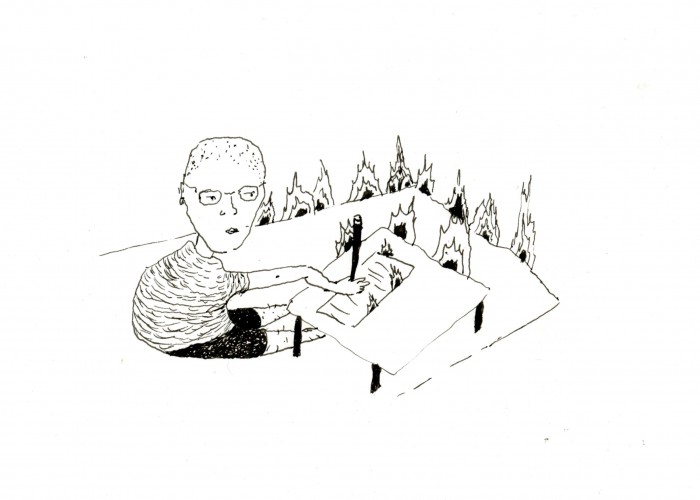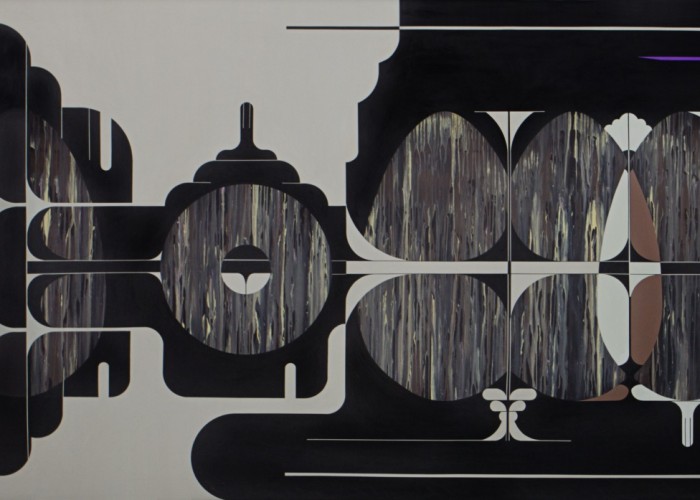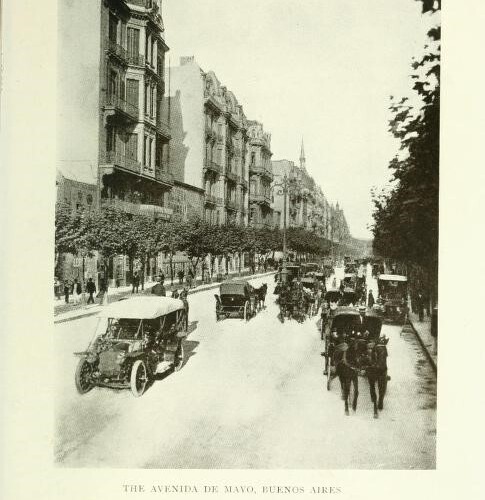Costa Rica: The Modern as Contemporary
Ben Merriman
Costa Rica’s Museum of Contemporary Art and Design (MADC) is located in a disused liquor distillery in the capital city of San José. The building still looks like a factory—unlike, say, the case of the Tate Modern, little has been done to convert the building from its original purpose. The museum is not air conditioned, and like the rest of San José it is warm and humid in all seasons. Wasps buzz in the rafters and tar sweats from the beams. On my visit, I walked in past an unstaffed front desk and looked at art unmonitored by guards or proximity sensors. MADC is a national museum that is neither isolated nor protected from the everyday life of its country. It is this contiguity, along with a vigorous engagement with the styles of the historical avant-gardes, that made MADC one of the most exciting museums I have visited in several years.
Costa Rica has not produced artists or writers of worldwide renown as other Central American countries have done. One could connect the lack of artistic visibility with its placid political history. The country is enviably stable, and though bullet holes from the brief 1948 Civil War are still visible in parts of the capital, this conflict is less a historical trauma than it is a point of national pride: the Civil War ended with the abolition of the military and of racial segregation, with universal suffrage and the creation of a constitutional republic. Perhaps uniquely in Latin America, the United States has maintained close economic and political ties to Costa Rica without meddling or invading. The country has many social problems, but no social catastrophes, and in accordance with this, few émigrés.
One of Costa Rica’s most vexing social problems—sex tourism and its consequences—was at the center of MADC’s major display of new work, “Rein@s de le Noche” (2011), by San José artist Eugenio Murillo-Fuentes. The exhibit comprised twelve large mixed-media pieces on the topic of sex work. The cycle bears a marked debt to Neue Sachlichkeit and the Berlin Dada. Murillo’s subjects—assault, police harassment, drug use, and lustmord—are lurid, his colors garish, and his human figures distorted and aggressively depersonalized. In these formal and thematic respects, the work does not advance past the styles of Interwar Modernism. In other ways, though, the work is joltingly contemporary: San José is best known as a hemispheric focus of sex tourism, and the country is struggling to balance its Catholicism, national traditions of civic tolerance, and economic dependence on foreign visitors. Though the works present few specific markers of place, the exhibit suggests that it is about San José. Murillo’s use of the @ symbol, in Spanish a relatively new typological means of signaling gender neutrality, is an acknowledgment that transgender sex workers are as visible on San José’s street corners as ciswomen. (A literal translation into English, “Queens of the Night,” might convey a similar ambiguity.) The featurelessness of his human figures similarly blurs the matter of gender, which is largely beside the point: Murillo’s work emphasizes (and implicitly criticizes) the reduction of sex workers to interchangeable objects of masculine fantasy. A second meaning of the exhibition title drives home this phantasmagoria: “Reina de la noche” is also a colloquial name for a toxic, night-blooming cactus.
It is not unusual for contemporary art to address a difficult social issue, but Murillo’s choice of medium, and his impersonal style, affords the viewer a less fraught space for moral reflection. Without ducking the ugly realities of sex tourism, Murillo shields viewers from the specificity of particular workers and clients in a way that a medium such as documentary photography would not. Depersonalization, though not the present norm for politically engaged art, avoids both the ethical conundrum of taking aesthetic pleasure in the unhappy lot of another human being, and the economic problem of making a profit from a freely given image. This step back from immediate reality would run the risk of over-aestheticizing a social problem, save that no visitor to the museum could fail to be aware of sex tourism in Costa Rica. (Even the government acknowledges the particular dilemmas; outside the museum were posters from a state-sponsored anti-transphobia campaign, a laudable project also altogether unimaginable in the United States.) The cycle is therefore a context-specific installation—it is not conceived for the specific exhibition space, but for its social environs, and would lose its intelligibility elsewhere.
Murillo, like most artists on display at MADC, suggests the continued adequacy of modernism to our present moment. For the most part, the contemporary art on exhibit proceeds as though Pop and Conceptualism had never occurred, and the most memorable pieces make sense of Latin American reality primarily with the formal resources of expressionism, Dada, and surrealism. Cecilia Paredes’s sublimely useless “Navigation Device” (Instrumento de Navigación) calls Kurt Schwitters to mind, but also drives home a criticism of Neocolonialism. Patricia Belli produces a high heel (“Shoe”/ “Zapato”) with an insole of thorny, poisonous Guanacaste bark, a work suggestive of Meret Oppenheim, but also making a clear point about masculine culture. Visitors from more cosmopolitan locales might take the reliance upon these styles as a sign of relative isolation. The great achievements of the historical avant-gardes are nearing their century mark, and the artists do not seem particularly driven to produce formal novelty.
However, the work at MADC can be understood in precisely the opposite way. Modernism sought to make things new, and treated the styles of the past as contemporaneous with the present and the products of all cultures as a shared store of artistic achievement. The first fruits of Modernism are now old enough to be history, farther from us in time than Modernism itself was from the academicism of the early 19th Century. The turn toward Modernism on display at MADC is earnest rather than appropriative, and suggests a union of the substance of Modernist styles with the spirit that first informed them. The result is something quite rare in contemporary art: work capable of surprising the viewer, and inviting a changed perspective on the world outside the museum walls.
* *
Image: Eugenio Murillo-Fuentes, “Disputas esquineras” (2011)
[ + bar ]
Nikkō’s a Real Trip
Matías Ariel Chiappe Ippolito translated by Andrea Rosenberg
日々旅にして旅を栖とす。 (松尾芭蕉)
“Every day is a journey, and the journey itself is home.” –Matsuo Bashō, tr. Sam... Read More »
Anthony Madrid
7. There was an old person whose zeal Made him bug-eyed and tense at the wheel. He wasn’t much fun, and they said he was un- representative of their ideal.
Read More »
The Prouf is in the Vermouf
James Warner
The first account our agency landed was a fortified wine called Clouf. Roland slammed a bottle on my desk and told me to think... Read More »
Argentina and Uruguay (excerpt)
Lucas Mertehikian
We don’t know much about Gordon Ross. We don’t know how long he lived in Buenos Aires nor where exactly he had come from. The first... Read More »








 sending...
sending...